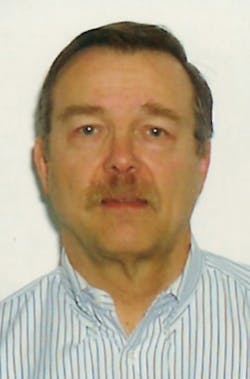The more ‘official’ name for those flying machines is UAS: Unmanned Aircraft Systems, and they’re pretty much everywhere. Unfortunately, ‘everywhere’ includes more than a million of them in the US, some of which pop up near airplanes and airports, and that’s not particularly good. Extensive discussions have ensued on both sides of the issue, with many of the positive benefits for aviation outlined in an excellent article in this publication by Brandon Guillot and Matt Dowell – photography, engineering, mapping, construction; remote, rooftop and aircraft inspections, wildlife control, incident command and search capability for first responders, training, and a lot more. However, the UAS capabilities also seem to put us in something of a pickle regarding not only in instances of unintentional/ inadvertent appearances of legitimately licensed UAS’s where they ought not to be – the list is quite long – but the safety/security threat when criminals, rogue operators, potential terrorists and various other just plain stupid people appear on the scene with their contraptions.
FAA has instituted rules and regulations, registration and licensing requirements (Part 107) to control the activity of the hobbyist and the legitimate business user, but from a security perspective, it should come as no surprise that the bad guys don’t give a damn about your stinkin’ regulations. Their mind set is essentially that of the suicide bomber – once is all they need. Recent airport meetings and conferences have given a great deal of time and attention to mitigating the threat at the airport level. In the opinion of many, myself included, that’s misguided at best, for a multitude of reasons. It’s an FAA airspace issue, albeit with significant input from other Federal agencies. There’s certainly some value in an airport maintaining a broader situational awareness of the legitimate operations within its jurisdiction, but that typically stops at the perimeter fence.
Let’s examine some of the proposals, the first being detection. Bad guys will disable any built-in transponder-like identifier; ATC radar won’t see any more than a few pixels in the background clutter, and not at all when in hover mode. Launch can come from 360 degrees, any height, any distance, 24/7, including several miles away from the airport beneath the government-published instrument approaches, altitudes and markers. How many cameras, in how many locations, will you need...
Next, assuming detection, any shoot-down scenario is a non-starter. It’s a moving target, and so is everything behind it and beneath it when/if it hits, especially for airports in a dense urban environment, and including any nearby aircraft target.
Should you see a rogue coming over the fence, (or a “good guy” that you didn’t recognize) it’s already too late. There’s no time for law enforcement to respond – assuming they have jurisdiction.
Frequency jamming has been mentioned, with little thought given to what else that might interfere with – from medical devices, pacemakers, laboratory equipment, and communications networks, to ATC and all arriving/departing aircraft in the sector. Counter-drones dropping nets on the attacking unit, and trained birds of prey to grab them (without the props cutting their feet off) are among the goofier proposals.
To FAA’s credit, they have issued a letter to all airports to NOT institute any counter-measures; to leave it to “Federal departments with explicit statutory authority to use this technology” ... without, of course, stating which technologies are under consideration.
And aside from the above commentary, we’ve seen no mention of whether TSA might seek to amend all 450-ish Airport Security Programs to staff up and train for the UAS threat. I am reminded of not so many years ago when there was a huge concern about ManPads – shoulder-mounted missiles aimed at aircraft and airports from anywhere, even from moving vehicles, where one media report noted the airport was “vulnerable from the north, south, east and west.”
Y’all be careful out there....
About the Author
Art Kosatka
CEO
Art Kosatka is CEO of TranSecure, an aviation consultancy in Virginia. He'll respond to questions or comments at [email protected].

